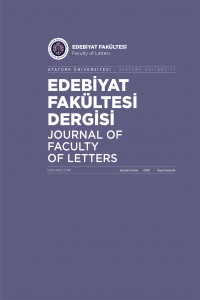Abstract
The tragic state of an ethnic minority group in Afghanistan is the primary subject in Khaled Hosseini’s novel The Kite Runner. The Hazaras’ violent and humiliating suppression takes place in the two narrative levels in Hosseini’s novel—in the story level or within the fictional society and in the level of narration or discourse. In other words, repression of the Hazara people is shown in the two narrative aspects of what and how. Thus, The Kite Runner is first of all the linguistic description of the humiliating and uncompromising dominant sociocultural perspective towards the Hazaras. Representing the Hazara people as one of the victims of ethnic cleansing in the modern history of Afghanistan, Hosseini’s narrative all in all fails to recognize a desired ethnic identity and dignity for the minority group. As we argue in this paper, the novel deliberately attempts to represent a reconciling atonement for the Hazaras’ humiliating repression within the Afghan society. This purpose, however, changes into an unfulfilled desire by the end of narrative as the recognition of the Hazara people’s ethnic identity increasingly becomes a secondary narrative concern.
References
- Erwin, Lee, 2012. “Domesticating the subaltern in the global novel in English.” The Journal of Commonwealth Literature, 47 (3), 325–39. https://doi.org/10.1177/0021989412451589
- Hosseini, Khaled. (2003). The Kite Runner. New York: Riverhead Books.
- Ibrahimi, Niamatullah. 2017. The Hazaras and the Afghan State: Rebellion, Exclusion and the Struggle for Recognition. London: Hurst & Company.
- Jefferess, David. 2009. “To be good (again): The Kite Runner as allegory of global ethics.” Journal of Postcolonial Writing. Vol. 45 (4), 389–400. https://doi.org/10.1080/17449850903273572
- Kivisto, Peter and Paul R. Croll. 2012. Race, and Ethnicity: The Basics. London: Routledge.
- Mousavi, Sayed Askar. 1998. The Hazaras of Afghanistan: an Historical, Culturl, Economic and Political Study. Richmond: Curzon Press.
- Rais, Rasul Bakhsh. 2009. Frontier State: War, Ethnicity, and State in Afghanistan. Plymouth: Lexington Books.
- Stuhr, Rebecca. 2009. Reading Khaled Hosseini. Oxford: Greenwood Press.
- “The Kite Runner.” Kirkus Reviews, 20 May, 2010. https://www.kirkusreviews.com/book-reviews/khaled-hosseini/the-kite-runner/
Abstract
The tragic state of an ethnic minority group in Afghanistan is the primary subject in Khaled Hosseini’s novel The Kite Runner. The Hazaras’ violent and humiliating suppression takes place in the two narrative levels in Hosseini’s novel—in the story level or within the fictional society and in the level of narration or discourse. In other words, repression of the Hazara people is shown in the two narrative aspects of what and how. Thus, The Kite Runner is first of all the linguistic description of the humiliating and uncompromising dominant sociocultural perspective towards the Hazaras. Representing the Hazara people as one of the victims of ethnic cleansing in the modern history of Afghanistan, Hosseini’s narrative all in all fails to recognize a desired ethnic identity and dignity for the minority group. As we argue in this paper, the novel deliberately attempts to represent a reconciling atonement for the Hazaras’ humiliating repression within the Afghan society. This purpose, however, changes into an unfulfilled desire by the end of narrative as the recognition of the Hazara people’s ethnic identity increasingly becomes a secondary narrative concern.
References
- Erwin, Lee, 2012. “Domesticating the subaltern in the global novel in English.” The Journal of Commonwealth Literature, 47 (3), 325–39. https://doi.org/10.1177/0021989412451589
- Hosseini, Khaled. (2003). The Kite Runner. New York: Riverhead Books.
- Ibrahimi, Niamatullah. 2017. The Hazaras and the Afghan State: Rebellion, Exclusion and the Struggle for Recognition. London: Hurst & Company.
- Jefferess, David. 2009. “To be good (again): The Kite Runner as allegory of global ethics.” Journal of Postcolonial Writing. Vol. 45 (4), 389–400. https://doi.org/10.1080/17449850903273572
- Kivisto, Peter and Paul R. Croll. 2012. Race, and Ethnicity: The Basics. London: Routledge.
- Mousavi, Sayed Askar. 1998. The Hazaras of Afghanistan: an Historical, Culturl, Economic and Political Study. Richmond: Curzon Press.
- Rais, Rasul Bakhsh. 2009. Frontier State: War, Ethnicity, and State in Afghanistan. Plymouth: Lexington Books.
- Stuhr, Rebecca. 2009. Reading Khaled Hosseini. Oxford: Greenwood Press.
- “The Kite Runner.” Kirkus Reviews, 20 May, 2010. https://www.kirkusreviews.com/book-reviews/khaled-hosseini/the-kite-runner/
Details
| Primary Language | English |
|---|---|
| Subjects | Creative Arts and Writing |
| Journal Section | Articles |
| Authors | |
| Publication Date | June 26, 2020 |
| Submission Date | February 26, 2020 |
| Published in Issue | Year 2020 Issue: 64 |


